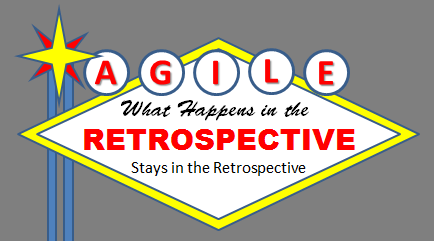What is an Agile Sprint Retrospective?
- By diesal9
- September 20, 2014
- 1 Comment

There is no such thing as a perfect agile team. In agile, there is always a chance to improve. For example, professional athletes must practice in order to keep their skills in top shape. Agile teams also need to do the same thing. They need to exercise, just like professional athletes, but they do it via the sprint retrospective instead. We will discuss what a sprint retrospect is, when it takes place, why it is needed, who attends and how it should be conducted.
The sprint retrospective is “an opportunity for the scrum team to reflect on the past sprint’s activities, including team dynamics, processes, tools and culture” (Moreira, 2013). The sprint retrospective occurs at the end of the sprint cycle. It involves the team inspecting itself to be better each time because it helps decent teams become awesome and awesome teams to stay awesome.
The main reason for the sprint retrospective is to maintain true agility because it is not achievable without it. The team’s problem areas are usually exposed by analyzing the sprint backlog’s burn-down report. Sometimes the issues were too small to have a significant enough impact to be seen in the report. When that happens, the team members themselves have to bring new items to the table. Unfortunately “this is a practice that some teams skip which is unacceptable, because self-organization requires the frequent reflection provided by the retrospective” (Sutherland).
The perceptions on who should attend the sprint retrospective can vary. According to Mario Moreira only the scrum master and the team members should attend (Moreira, 2013). Other sources say to invite whoever is interested in attending. Moreira frowns on too many attendees in the sprint retrospective because it should be a place where the “team members must believe they can discuss problems knowing that anything said will stay in the room” (Moreira, 2013).
 So what happens in the sprint retrospective you ask? First, the meeting is usually scheduled for an hour. The beginning of that hour can start a number of ways. For example, there is an ad-hoc method that has team members shout out, not literally, items that they feel deserve attention. Another way to start the meeting is to have the scrum master go around the table and ask each team member if they have any new points to bring up. Either way the voting on what to discuss takes place after everyone has spoken up about new items. Remember, unless this was the first sprint there should be items from the previous sprint retrospective too. Those items are also up for a vote to discuss this time around.
So what happens in the sprint retrospective you ask? First, the meeting is usually scheduled for an hour. The beginning of that hour can start a number of ways. For example, there is an ad-hoc method that has team members shout out, not literally, items that they feel deserve attention. Another way to start the meeting is to have the scrum master go around the table and ask each team member if they have any new points to bring up. Either way the voting on what to discuss takes place after everyone has spoken up about new items. Remember, unless this was the first sprint there should be items from the previous sprint retrospective too. Those items are also up for a vote to discuss this time around.
Once the team has chosen the items to discuss the meeting shifts into the heart of the exercise. Most teams use a start-stop-continue cadence when reflecting on each item. For example, each team member gives a statement like; I will stop doing x, start doing y, and continue doing z.
In conclusion, the sprint retrospective is a very important part of the sprint process. As simple as it is to implement, it can be very powerful and should not be skipped. “When done well, retrospectives are often the most beneficial ceremony a team practices. When done poorly, retrospectives can be wasteful and grueling to attend” (Microsoft, 2012).
Click here to view the Criterion Report
References
Ambler, S. W., & Holitza, M. (2012). Agile For Dummies IBM Limited Edition. Hoboken: John Wiley & Sons, Inc.
Microsoft. (2012, July 1). Microsoft Developer Network. Retrieved from Effective Sprint Retrospectives: http://msdn.microsoft.com/en-us/library/jj620912.aspx
Moreira, M. (2013, July 15). Agile Adoption Roadmap. Retrieved from What happens in the Retrospective stays in the Retrospective! : http://cmforagile.blogspot.com/2013/07/what-happens-in-retrospective-stays-in.html
Software, M. G. (2014, 7 13). Topics in Scrum. Retrieved from Sprint Retrospective: http://www.mountaingoatsoftware.com/agile/scrum/sprint-retrospective
Sutherland, J. (n.d.). Scrum Handbook.
Agile Image
http://4.bp.blogspot.com/-_YcmTnoiWR4/UeSBNUClBFI/AAAAAAAAAK4/urclDPS-SEI/s1600/What+happens+in+the+Retro.png
Stat-stop-continue Image
http://www.glassbeadconsulting.com/what-will-you-stop-start-and-continue-in-2013/

The first thing that caught my attention is the image in the beginning which says what happens the retrospective stays there. This is a very interesting way to start the blog which grabs the attentions of the users .You have clearly explained what a sprint retrospective is and what actually happens it. The images are really interesting which makes it clear to even a novice reader. I like the flow of the blog by clearly explaining every detail of sprint retrospective and also concluding it with the relevant facts. Overall i am really impressed by this blog!!